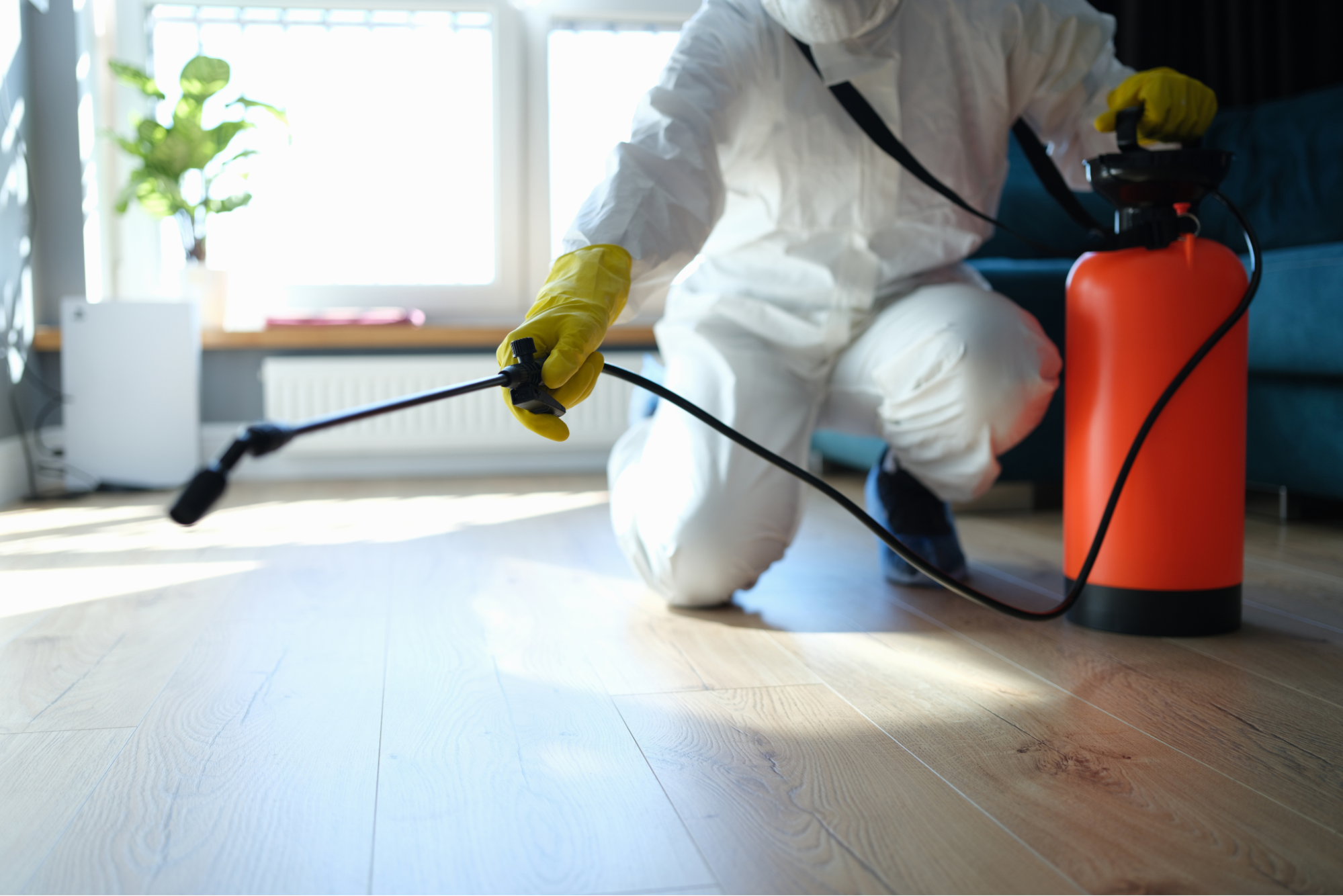A1 Pest Control Charlotte NC Bed Bugs - Specialist Extermination Services
A1 Pest Control Charlotte NC Bed Bugs - Specialist Extermination Services
Blog Article
Bed Bug Treatment Breakdown: Contrasting Chemical Vs. Non-Chemical Solutions
In the world of insect control, particularly when taking care of the consistent issue of bed bugs, the option between chemical and non-chemical therapy solutions can be an essential one. Both techniques supply distinct advantages and drawbacks, influencing aspects such as effectiveness, safety considerations, and general cost. By examining the nuanced details of each approach, a clearer understanding of which path to go after in resolving a bed pest infestation can be achieved.
Efficiency of Chemical Treatments
Chemical treatments for bed bug infestations have been commonly identified for their quick and potent efficiency in eliminating these insects. When considering the effectiveness of chemical treatments, it is critical to understand that they can offer a comprehensive and quick option to a bed bug problem.
Additionally, chemical therapies have the advantage of providing residual impacts, implying that they can remain to eliminate bed bugs also after the initial application. This recurring action is particularly advantageous in combating any type of potential re-infestations. Furthermore, the quick action of chemical therapies can bring relief to people encountering serious bed insect invasions, permitting them to restore control of their living spaces promptly.
Safety Interest In Chemical Solutions
When making use of chemical services for bed insect treatment is making sure the safety and security of occupants and the atmosphere,One vital element that requires careful consideration. While chemical therapies can be efficient in eradicating bed bugs, they may position risks if not dealt with effectively. One of the key safety problems with chemical solutions is the possible injury they can create to human health. Direct exposure to specific chemicals used in bed pest treatments can lead to respiratory system problems, skin irritation, or various other damaging reactions, especially in individuals with pre-existing conditions or sensitivities. Additionally, improper application or dosage of chemical pesticides can lead to toxic residues lingering in the cured location, posturing long-lasting health dangers to passengers.
Furthermore, the ecological effect of chemical options is another considerable factor to consider. Some chemicals used in bed pest treatments may be hazardous to beneficial pests, wild animals, and environments if they seep right into the soil or water systems. It is vital to utilize chemical treatments judiciously, complying with security standards, and thinking about much less toxic choices to mitigate these dangers and ensure the reliable and secure management of bed insect problems.
Benefits of Non-Chemical Approaches
Considering the prospective safety and security issues and ecological influence associated with chemical services for bed insect therapy, discovering non-chemical techniques provides a promising choice with a number of unique benefits. Non-chemical therapies are ecologically pleasant, as they do not contribute to air or water pollution, making them a lasting selection for pest control.
In addition, non-chemical remedies can be efficient in targeting bed bugs, consisting of hard-to-reach locations where chemical therapies may not penetrate - A1 pest control services charlotte. Approaches such as warmth therapy, vacuuming, why not check here steam cleaning, and bed mattress encasements give complete obliteration without the use of hazardous chemicals.
Limitations of Non-Chemical Treatments

Furthermore, non-chemical treatments usually need numerous applications to attain successful obliteration. This can be taxing and may not constantly ensure full elimination of all bed insects and their eggs, specifically in hard-to-reach or concealed places.
Additionally, the success of non-chemical therapies heavily depends on appropriate implementation and thoroughness, which can be testing for individuals without expert knowledge. Poor application of non-chemical methods may result in incomplete eradication, bring about consistent problems and the requirement for extra therapies.
Consequently, while non-chemical therapies have their benefits, it is important to recognize these limitations and consider them when establishing the most reliable technique for taking care of bed insect infestations.
Price Contrast: Chemical Vs. Non-Chemical Options
Provided the constraints related to non-chemical therapies, an essential facet to evaluate in the context of bed insect management is the price contrast between chemical and non-chemical choices. Chemical treatments normally include the application of insecticides by professionals, which can vary from $250 to $900 per space, depending on the severity of the problem and the size of the location to be dealt with. On the other hand, non-chemical therapies like heat therapy or heavy steam can be extra costly, with prices ranging from $1,000 to $6,000 for an entire home. While the first cost of chemical therapies may seem reduced, multiple therapies may be required to fully get Click This Link rid of the invasion, potentially enhancing the general price. On the various other article source hand, non-chemical alternatives might supply a much more environmentally friendly and lasting option, although they can be cost-prohibitive for some people. Eventually, when taking into consideration the price of bed insect treatment alternatives, it is essential to weigh the in advance expenses versus the efficiency and long-lasting sustainability of the chosen technique.
Verdict

Considering the potential security issues and ecological effect linked with chemical options for bed pest treatment, discovering non-chemical techniques presents a promising choice with several unique benefits.Offered the constraints connected with non-chemical treatments, an essential element to examine in the context of bed insect administration is the expense contrast in between chemical and non-chemical alternatives. In comparison, non-chemical therapies like warm therapy or steam can be more costly, with costs ranging from $1,000 to $6,000 for an entire home. While the first expense of chemical treatments might appear reduced, multiple treatments may be needed to totally eliminate the problem, potentially raising the general expense.In final thought, when comparing chemical and non-chemical bed insect treatment choices, it is necessary to take into consideration performance, safety, advantages, constraints, and price.
Report this page